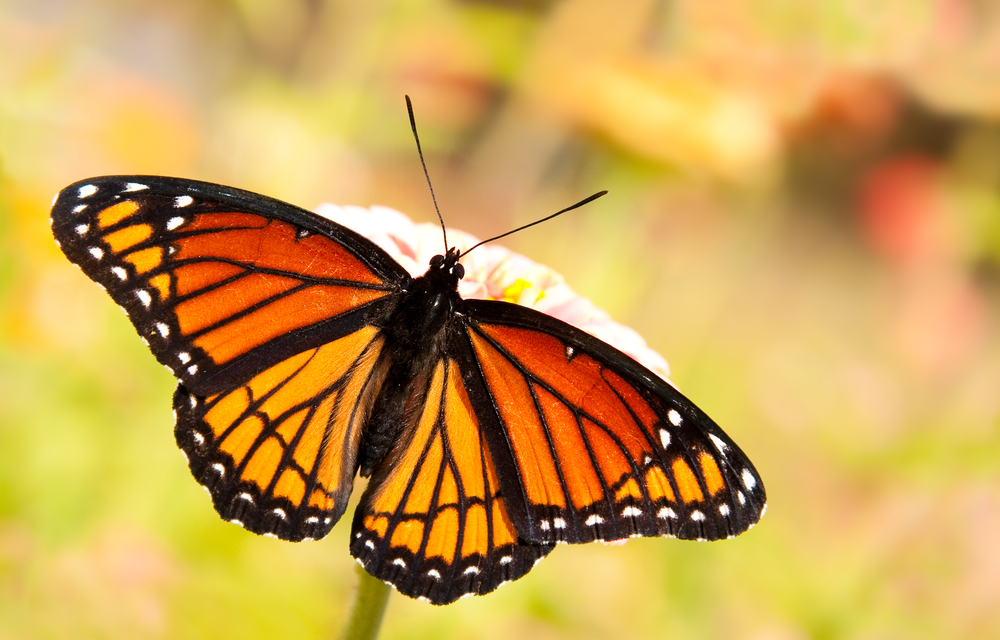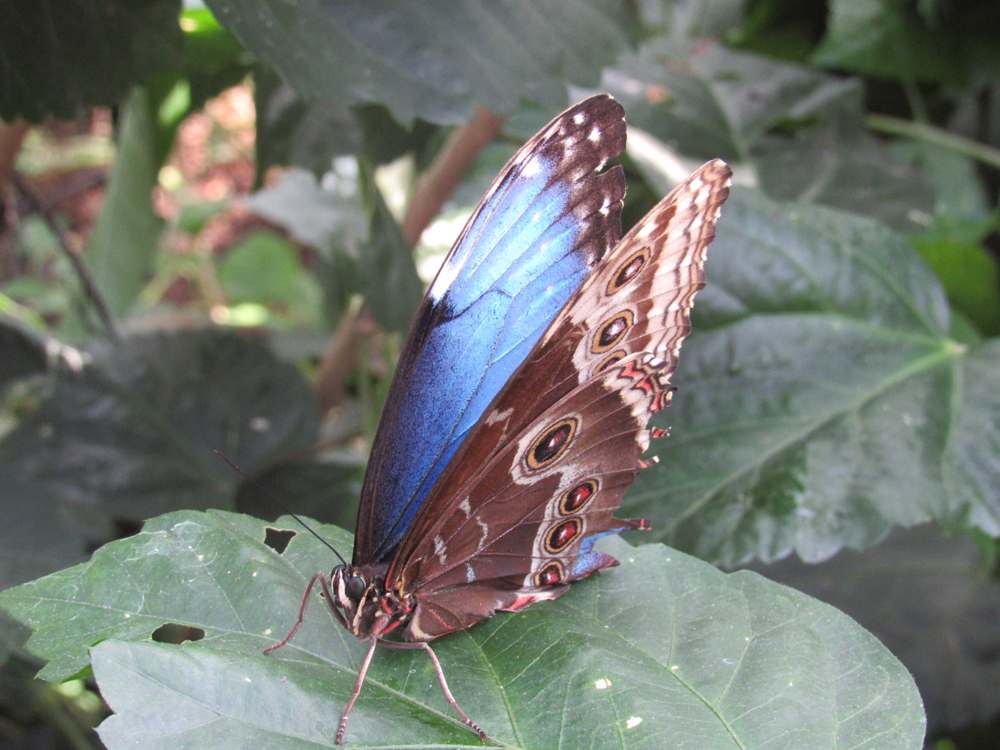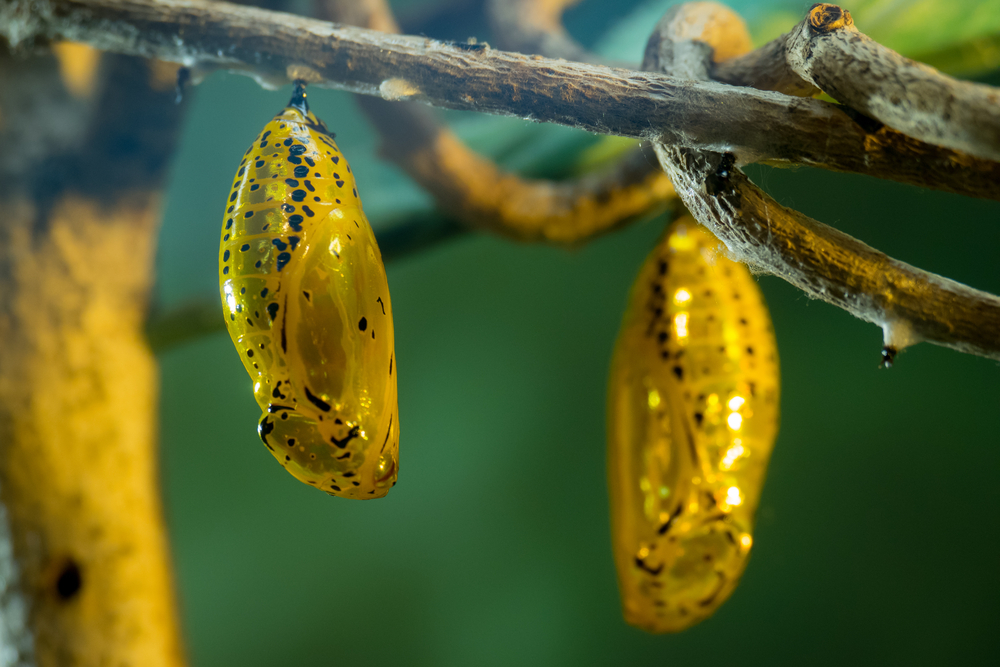There are over 80 recognized species of Morpho butterflies (genus Morpho) found in Central and South America. These butterflies are known for their stunning iridescent blue wings and are part of the Nymphalidae family. While there are numerous species, some of the most well-known and studied include Morpho menelaus (Blue Morpho), Morpho peleides (Peleides Blue Morpho), and Morpho rhetenor (Sunset Morpho). Each species within the Morpho genus may have unique characteristics and variations in wing coloration and patterns. These butterflies are not only admired for their beauty but also play important roles in pollination within their tropical rainforest habitats.
About
The Blue Morpho Butterfly, scientifically known as Morpho menelaus, enchants with its iridescent azure wings, captivating observers across tropical rainforests. Belonging to the family Nymphalidae, which encompasses diverse butterfly species, the Blue Morpho Butterfly is a cherished inhabitant of the Animal Kingdom, adored for its stunning beauty.
With wings spanning up to six inches, the Blue Morpho Butterfly boasts vibrant blue hues that shimmer in sunlight, captivating predators and admirers alike. Its wings, adorned with intricate patterns, aid in camouflage and defense, while its delicate body facilitates graceful flight through dense forest canopies.
Blue Morpho Butterflies inhabit lush rainforests of Central and South America, where they flit among the verdant foliage, seeking nectar and mates. Their striking appearance serves as both camouflage and a warning signal to potential predators, reflecting ultraviolet light to deter attacks.
As adults, Blue Morpho Butterflies primarily feed on the nectar of flowers, using their long proboscis to extract sustenance. In their larval stage, they consume leaves of various plants, contributing to nutrient cycling in their ecosystem.
Conservation Status
The Blue Morpho Butterfly, although not individually assessed by the IUCN Red List, faces threats from habitat loss due to deforestation and illegal collection for the exotic pet trade. Additionally, climate change poses challenges to their survival by altering the delicate balance of their rainforest habitats. Conservation efforts aimed at preserving tropical forests are crucial for safeguarding the future of this enchanting species.
Through its ethereal beauty and ecological significance, the Blue Morpho Butterfly symbolizes the intricate interconnectedness of life in the world’s rainforests.
Physical Characteristics
The Blue Morpho Butterfly is renowned for its stunning physical appearance:
Physical Appearance:
- Wings: The wingspan of a Blue Morpho Butterfly ranges from approximately 5 to 6 inches (12.7 to 15.2 centimeters).
- Coloration: The upper surface of its wings is an iridescent, shimmering blue that appears to change in color as light reflects off microscopic scales. The color can range from bright azure to deep sapphire.
- Eye Spots: The underside of the wings features distinctive eye-shaped spots with brown borders, serving as a form of camouflage when the butterfly rests with its wings closed.
- Body: The body of the Blue Morpho Butterfly is relatively small and slender, with a black thorax and abdomen.
Weight:
- The weight of a Blue Morpho Butterfly is exceptionally light, measuring only a few grams (less than 0.01 pounds).
Metric Measurements (Approximate):
- Wingspan: 12.7 to 15.2 centimeters
- Weight: A few grams
It’s important to note that the Blue Morpho Butterfly’s stunning blue coloration is not due to pigments but is a result of the microscopic scales on its wings refracting and reflecting light. This structural coloration creates the dazzling, iridescent effect that makes them a true marvel of nature. The vivid blue of their wings is one of the most striking and captivating features of these butterflies.
Reproduction
The reproductive cycle of the Blue Morpho Butterfly, like that of many butterfly species, goes through several stages, but it differs significantly from mammals in terms of gestation and birth. Here’s an overview of their reproductive cycle:
- Egg Stage:
- The cycle begins when a female Blue Morpho Butterfly lays eggs on the leaves of specific host plants. The number of eggs laid can vary but is typically between 100 and 200 eggs.
- Larval Stage (Caterpillar):
- Once the eggs hatch, tiny caterpillars emerge. These caterpillars are voracious feeders and primarily consume the leaves of their host plants.
- They go through several instars (growth stages), shedding their exoskeletons as they grow.
- Pupal Stage (Chrysalis):
- After reaching full maturity as caterpillars, they enter the pupal stage. During this stage, they form chrysalises, which are protective casings that hang from branches or other surfaces.
- Inside the chrysalis, the caterpillar undergoes metamorphosis, transforming into an adult butterfly. This process can take several weeks.
- Adult Butterfly:
- Once the transformation is complete, the adult Blue Morpho Butterfly emerges from the chrysalis.
- The adult butterflies are ready to reproduce, and the cycle continues as females lay eggs, starting the process anew.
Gestation and Birth:
- Butterflies do not have a gestation period or give live birth like mammals. Instead, they undergo metamorphosis from egg to caterpillar to pupa and finally to adult butterfly.
- The entire reproductive cycle, from egg laying to the emergence of adult butterflies, can take several weeks to months, depending on environmental conditions and species-specific factors.
It’s important to note that the focus of butterfly reproduction is on the development and survival of their offspring in various life stages, rather than a gestation period or live birth as seen in mammals. The process of metamorphosis is a remarkable and unique aspect of butterfly life cycles.
Lifespan
The lifespan of a Blue Morpho Butterfly varies depending on several factors, including environmental conditions and predation risks. Here’s an overview of their lifespan in the wild and in captivity, as well as their main threats:
In the Wild:
- The lifespan of a Blue Morpho Butterfly in the wild typically ranges from a few weeks to several months.
- Adult Blue Morpho Butterflies spend the majority of their short lives in search of nectar from flowers and are primarily focused on reproduction.
- Mating and laying eggs are crucial activities during their adult phase.
- They are vulnerable to predation by birds, reptiles, and other insect-eating animals during their relatively short lifespan.
- Harsh environmental conditions, such as extreme weather events, can also impact their survival.
In Captivity:
- In captivity, Blue Morpho Butterflies can have a longer lifespan compared to their wild counterparts.
- When provided with suitable conditions, protection from predators, and a stable supply of food, they can live for several months.
- Butterfly houses, butterfly gardens, and conservatories often maintain captive populations for educational and conservation purposes.
Main Threats:
- Habitat Loss: Deforestation and habitat destruction in their native rainforest habitats pose a significant threat to Blue Morpho Butterflies. Loss of host plants and nectar sources can disrupt their life cycle.
- Climate Change: Altered weather patterns, extreme temperatures, and habitat disruption due to climate change can impact their survival and availability of food sources.
- Predation: Birds, lizards, and other insects are natural predators of Blue Morpho Butterflies, especially during their vulnerable adult stage.
- Collection for the Pet Trade: Some individuals are captured and traded in the exotic pet market, posing a threat to wild populations. This practice is often illegal and unsustainable.
- Pollution: Pesticides and other pollutants can negatively affect Blue Morpho Butterflies, both in their larval and adult stages, impacting their reproduction and survival.
Conservation efforts are essential to protect the Blue Morpho Butterfly and its natural habitat. These efforts include preserving rainforests, implementing sustainable practices, and raising awareness about the importance of these butterflies in pollination and ecosystem health.
Eating Habits
The Blue Morpho Butterfly primarily feeds on flower nectar during its adult stage. Here’s a description of their eating habits and how they gather their food:
Diet:
- Nectar: Adult Blue Morpho Butterflies primarily feed on the nectar of various flowering plants. Nectar is a sugary liquid produced by flowers as a reward for pollinators like butterflies. It provides butterflies with essential carbohydrates and energy.
Feeding Process:
- Foraging: Blue Morpho Butterflies are strong fliers and have excellent vision, which allows them to spot and identify suitable nectar sources.
- Landing and Feeding: When a Blue Morpho Butterfly identifies a suitable flower, it lands on the flower’s petals.
- Proboscis Insertion: Using their long, tubular proboscis (a specialized mouthpart), they insert it into the flower’s nectaries, which are the structures containing nectar.
- Nectar Uptake: The proboscis acts like a straw, allowing the butterfly to suck up the sugary nectar from the flower.
- Pollination: As they feed, Blue Morpho Butterflies inadvertently transfer pollen from the flower’s stamen (male reproductive part) to the stigma (female reproductive part), facilitating pollination, which is crucial for the reproduction of many plant species.
Note:
- Blue Morpho Butterflies are known for their remarkable iridescent blue wings, but their striking coloration is not related to their diet. It is the result of microscopic scales on their wings that refract and reflect light.
- While nectar is their primary food source as adults, Blue Morpho Butterfly caterpillars (larvae) have different feeding habits. Caterpillars primarily feed on the leaves of specific host plants, where they consume plant material and grow until they pupate into adults.
Blue Morpho Butterflies, like other butterfly species, play a crucial role in pollination by transferring pollen between flowers as they feed on nectar. This ecological function makes them valuable pollinators in their rainforest habitats, contributing to the reproduction of various plant species.
Uniqueness
The Blue Morpho Butterfly (Morpho menelaus) is unique and captivating for several reasons:
- Stunning Iridescent Wings: The Blue Morpho Butterfly is renowned for its striking iridescent blue wings, which appear to shimmer and change color as light reflects off microscopic scales on their wing surfaces. This structural coloration is unlike pigment-based colors seen in many other animals and makes them a true marvel of nature.
- Camouflage and Defense: While their brilliant blue wings are a visual spectacle, they also serve as a form of camouflage. When resting, Blue Morpho Butterflies close their wings, revealing the underside with eye-shaped spots and brown borders. This mimics the appearance of eyes of a larger creature and can deter potential predators.
- Habitat in Tropical Rainforests: Blue Morpho Butterflies are native to the lush tropical rainforests of Central and South America, where they inhabit the canopy. Their presence in these biodiverse ecosystems contributes to the overall health and pollination of the forest.
- Short Adult Lifespan: The adult stage of a Blue Morpho Butterfly is relatively short, lasting only a few weeks to months. This brief period is primarily dedicated to reproduction and the transfer of pollen between flowers, making them important pollinators.
- Unique Life Cycle: Blue Morpho Butterflies go through a complete metamorphic life cycle, transitioning from egg to caterpillar to pupa (chrysalis) and finally to an adult butterfly. The transformation from a caterpillar to a butterfly is a fascinating and unique process.
- Economic and Ecological Importance: Blue Morpho Butterflies are valuable pollinators in their rainforest habitats. They play a crucial role in facilitating the reproduction of various plant species, including many tropical plants and orchids. This ecological function contributes to the health and diversity of these ecosystems.
- Iconic in Culture: Blue Morpho Butterflies have captured the imagination of people around the world and are often featured in art, literature, and cultural symbolism. They are considered a symbol of natural beauty and biodiversity.
- Tourist Attraction: In regions where Blue Morpho Butterflies are found, they are a significant attraction for eco-tourism. Butterfly gardens and conservatories provide opportunities for people to observe and appreciate these stunning creatures up close.
In summary, the Blue Morpho Butterfly’s iridescent beauty, unique life cycle, role in pollination, and cultural significance make it a remarkable and captivating species in the world of butterflies and the animal kingdom as a whole.
FAQ’s
1. How many types of Morpho butterflies are there?
2. How does the Blue Morpho compare to other Morpho butterflies?
Related Family Species
Sources
- Britannica, Morpho, https://www.britannica.com/animal/morpho-insect, retrieved January 2024.
- Burnie, David & Wilson, Don, Animal, Smithsonian Institute, Washington DC.
- Hickman et al, Integrated Principle of Zoology, McGraw Hill, Boston.














































































